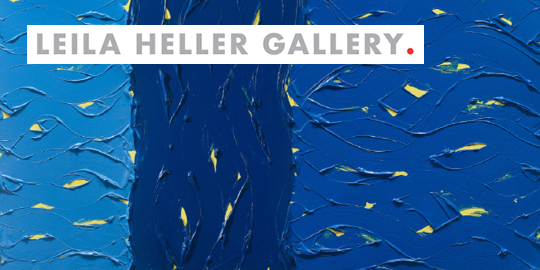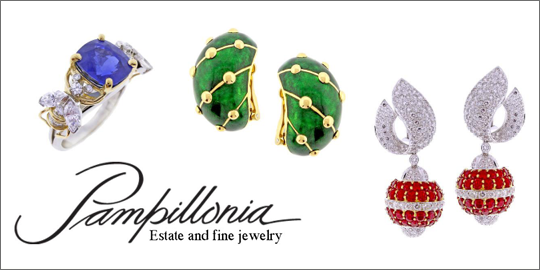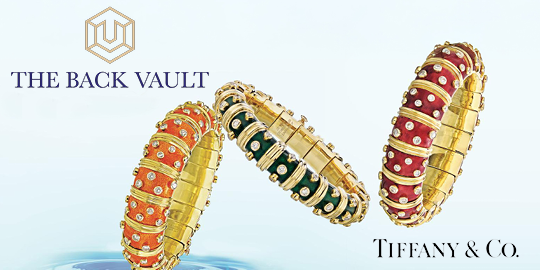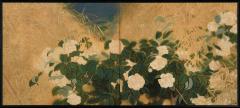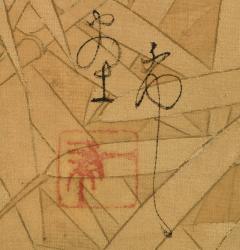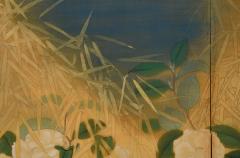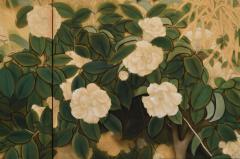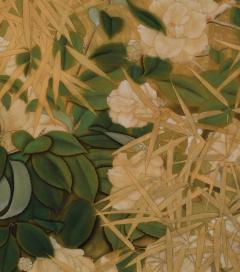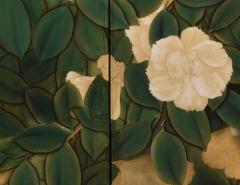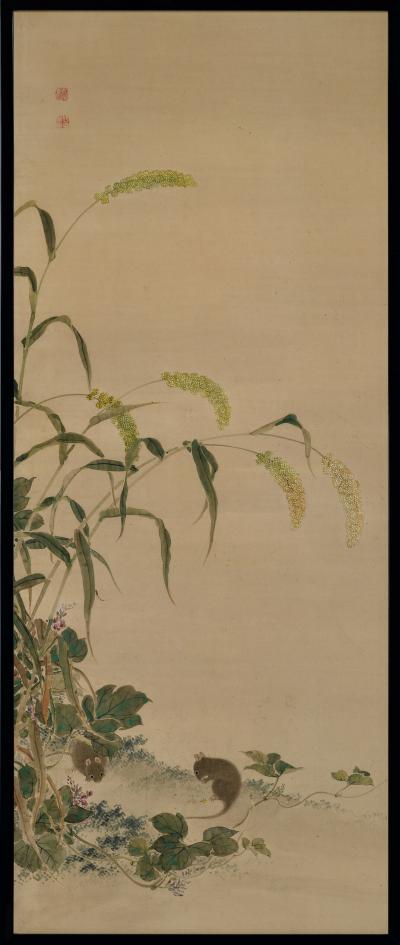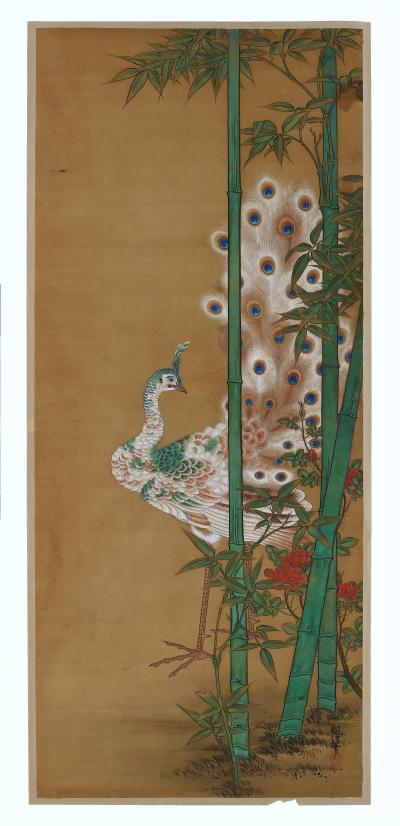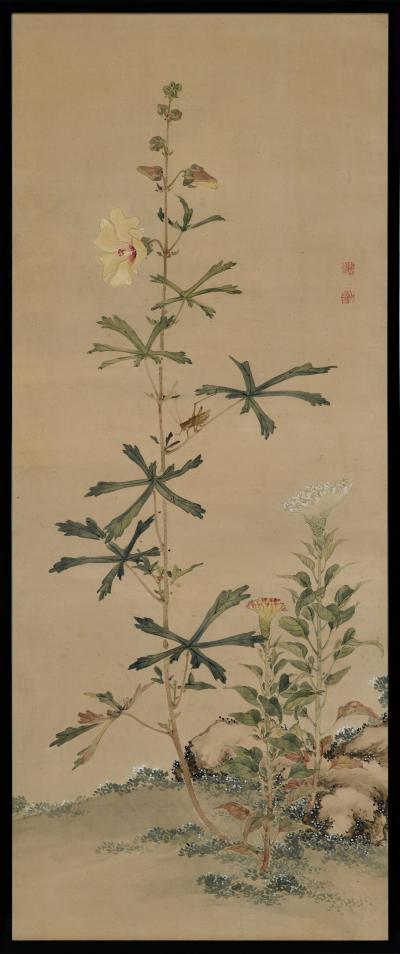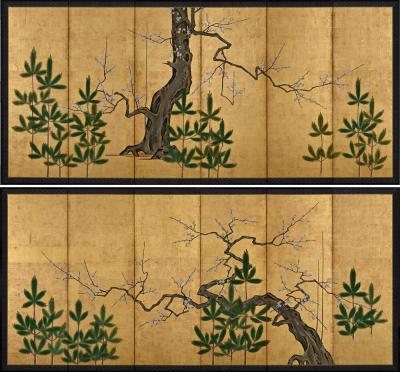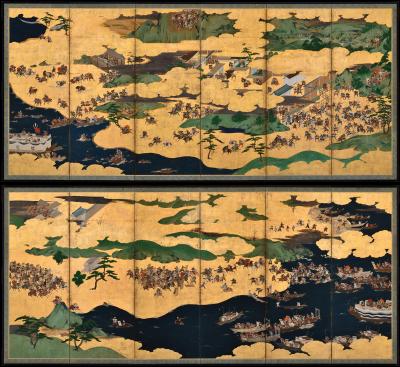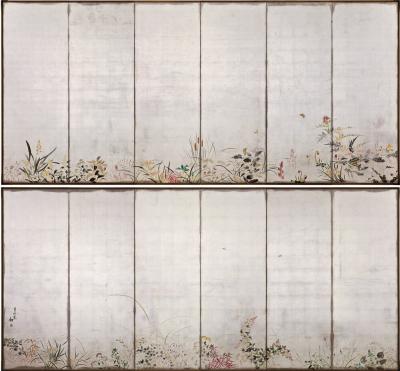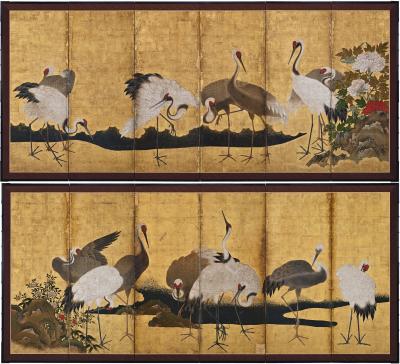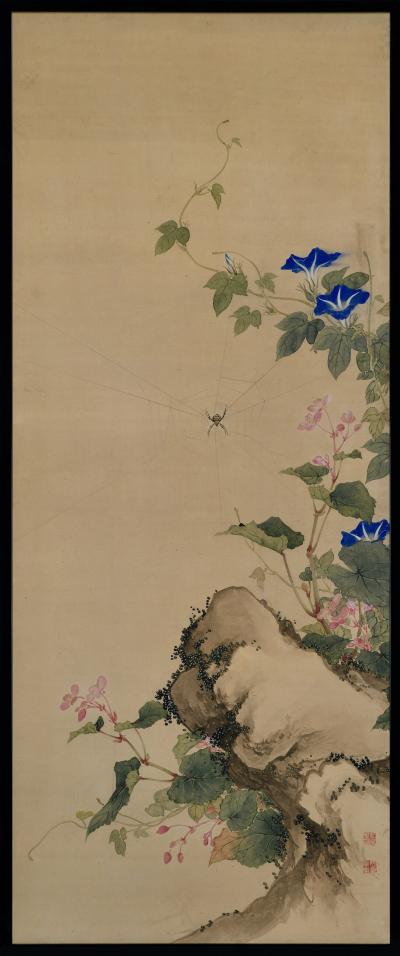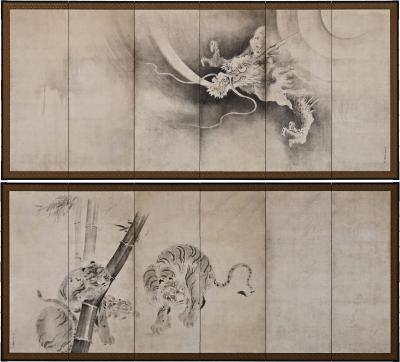Listings / Fine Art / Paintings / Still Life
Circa 1925. Taisho era Japanese Nihonga Screen. Camellia & Bamboo
-
Description
Camellia & Bamboo
Taisho era
Two-panel Japanese Screen. Mineral pigment, gofun and ink on silk.
Dimensions: H. 77.5 cm x W. 173 cm (30.5” x 68”)
Price: USD 14,800
A small Japanese Nihonga screen capturing a moment suspended in time where each element – from the feathery bamboo to the immaculate bloom of the camellia and the brilliant blue water beyond – combine to form a picture of perfect harmony. The fleeting warmth of the winter’s sun is a paradox to the cold, a reminder that even in winter, life thrives and flourishes. The visual contrast between the elements is striking. The Bamboo’s slender and brittle leaves contrast beautifully with the dense, broad leaves and showy flowers of the camellia. Similarly the lush pigments of the deep green camellia foliage and brilliant blue water contrast strongly with the neutral colors of the bamboo, which are largely defined by the natural color of the silk canvas. Known as tsubaki in Japanese, camellia flowers have been revered since ancient times, embodying elegance and resilience. They thrive in the middle of Japan’s harsh winters, especially if they are sheltered from cold winds and frost.
Nihonga, which means “Japanese-style painting,” was a response to the Western influence that was prevalent during the era but aimed to maintain and celebrate Japan’s artistic heritage. Nihonga artists during the Taisho period continued to employ traditional Japanese painting techniques and materials though began to experiment with color palettes, compositions and brush techniques. Nihonga painting often continued the tradition of depicting the beauty of the natural world, with a focus on landscapes, flowers, and birds. Artists combined these themes with modern influences, creating a fusion of tradition and modernity. -
More Information
Period: 1920-1949 Creation Date: 1925 Styles / Movements: Asian Art Incollect Reference #: 792273 -
Dimensions
W. 68.11 in; H. 30.51 in; W. 173 cm; H. 77.5 cm;
Message from Seller:
Kristan Hauge Japanese Art, based in Kyoto's museum district since 1999, specializes in important Japanese screens and paintings for collectors, decorators, and museums worldwide. Contact us at khauge@mx.bw.dream.jp or +81 75-751-5070 for exceptional access to Japanese art and history.


